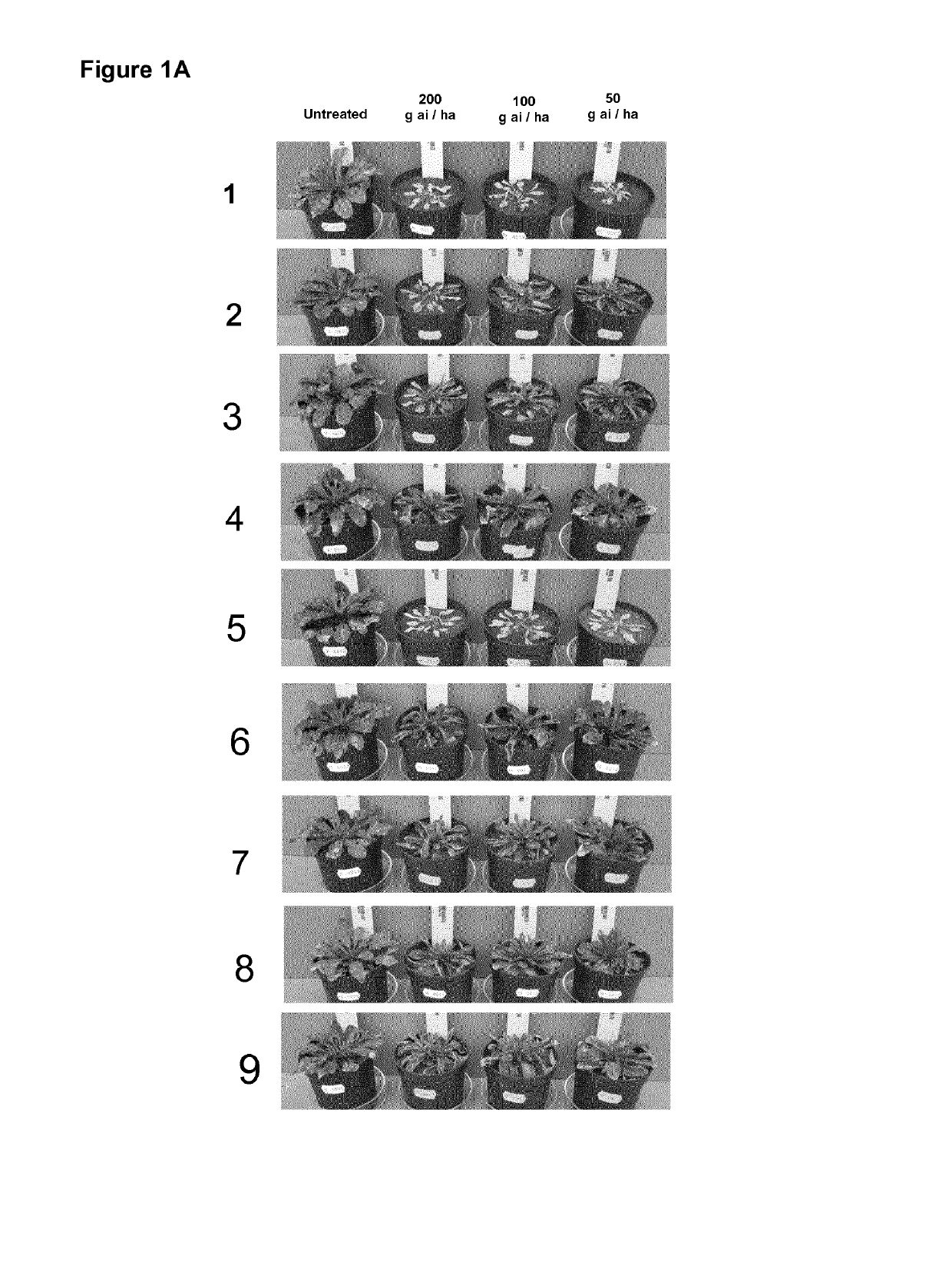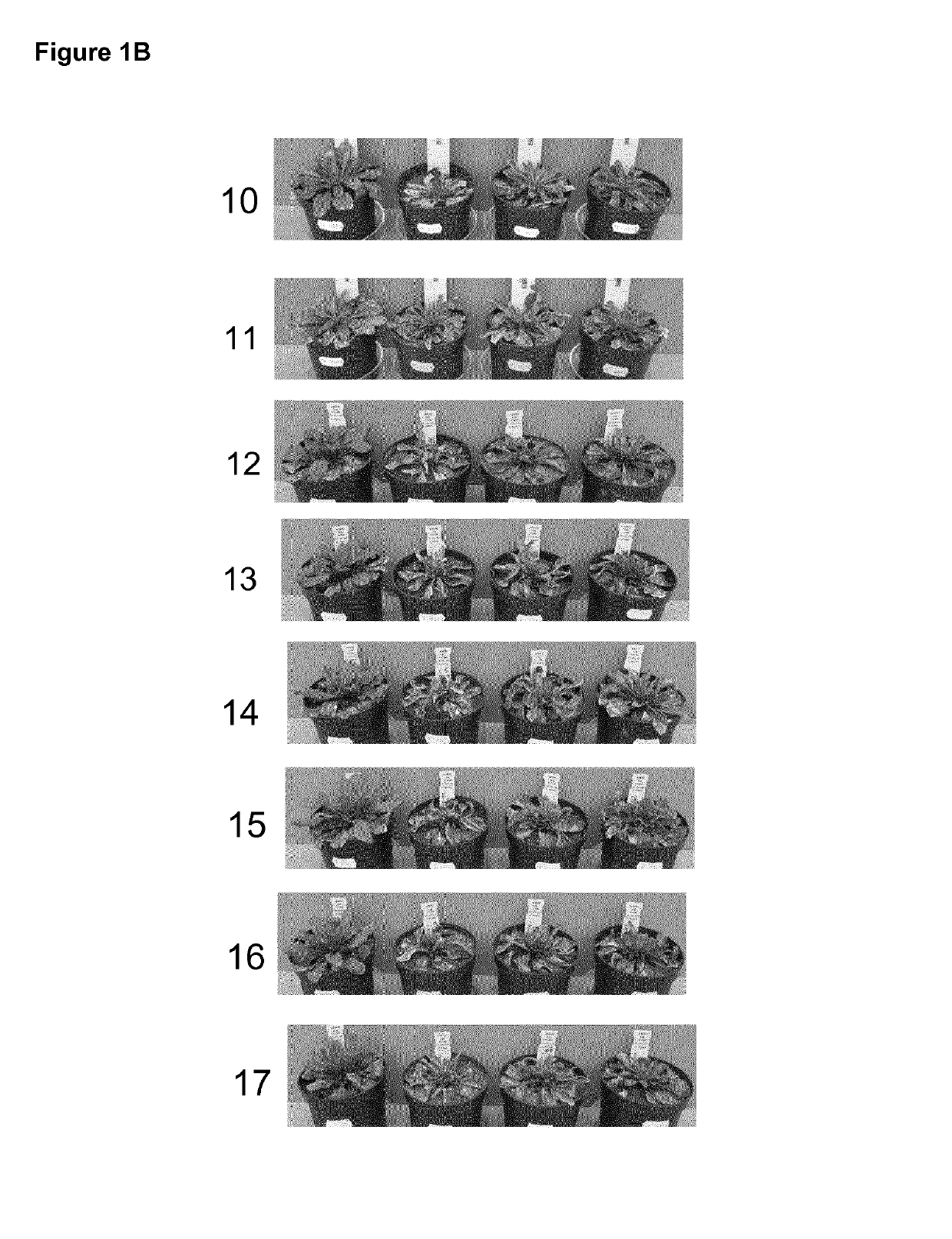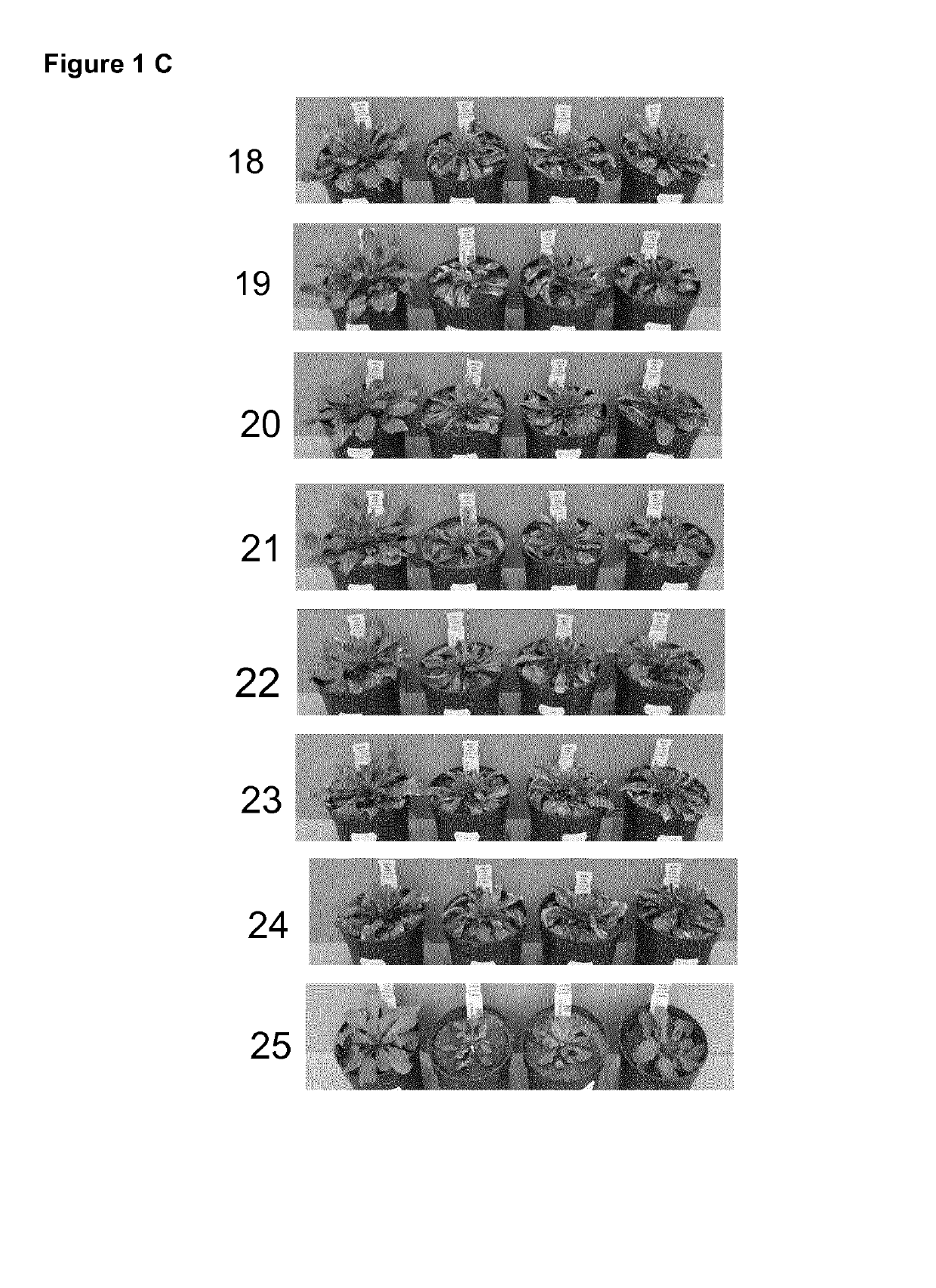Plants having increased tolerance to herbicides
a technology of phenylpyridine and herbicide, which is applied in the field of plants having an increased tolerance to ppoinhibiting herbicides, can solve the problems of rapid cell death, accumulation of protoporphyrinogen ix in chloroplasts and mitochondria, etc., and achieve the effect of increasing the resistance to phenylpyridine herbicides
- Summary
- Abstract
- Description
- Claims
- Application Information
AI Technical Summary
Benefits of technology
Problems solved by technology
Method used
Image
Examples
example 1
Site-Directed Mutagenesis PPO
[1552]All nucleic acid coding sequence and all single and double mutants encoding a herbicide tolerant PPO polypeptides are synthesized and cloned by Geneart (Geneart AG, Regensburg, Germany). Rational design mutants are synthesized by Geneart. Random PPO gene libraries are synthesized by Geneart. Plasmids are isolated from E. coli TOP10 by performing a plasmid minpreparation and confirmed by DNA sequencing.
example 2
Expression and Purification of Recombinant Wildtype and Mutant PPO
[1553](Taken from: Franck E. Dayan, Pankaj R. Daga, Stephen O. Duke, Ryan M. Lee, Patrick J. Tranel, Robert J. Doerksen. Biochemical and structural consequences of a glycine deletion in the α-8 helix of protoporphyrinogen oxidase. Biochimica et Biophysica Acta 1804 (2010), 1548-56) Clones in pRSET vector are transformed into BL21(DE3)-pLysS strain of E. coli. Cells are grown in 250 mL of LB with 100 μgmL-1 of carbenicillin, shaking overnight at 37° C. Cultures are diluted in 1 L of LB with antibiotic and grown at 37° C. shaking for 2 h, induced with 1 mM IPTG and grown at 25° C. shaking for 5 more hours. The cells are harvested by centrifugation at 1600×g, washed with 0.09% NaCl, and stored at −80° C. Cells are lysed using a French press at 140 MPa in 50 mM sodium phosphate pH 7.5, 1 M NaCl, 5 mM imidazole, 5% glycerol, and 1 μg mL-1 leupeptin. Following lysis, 0.5 U of benzonase (Novagen, EMD Chemicals, Inc., Gibbsto...
example 3
PPO Enzyme Assay (Non-Recombinant)
[1554]PPO protein (EC 1.3.3.4) is extracted from coleoptiles or shoots (150 g fresh weight) of dark-grown corn, black nightshade, morning glory, and velvetleaf seedlings as described previously (Grossmann et al. 2010). Before harvesting, the seedlings are allowed to green for 2 hours in the light in order to achieve the highest specific enzyme activities in the thylakoid fractions at low chlorophyll concentrations. At high chlorophyll concentrations significant quenching of fluorescence occurs, which limits the amount of green thylakoids that can be used in the test. Plant materials are homogenized in the cold with a Braun blender using a fresh-weight-to-volume ratio of 1:4. Homogenization buffer consisted of tris(hydroxymethyl)aminomethane (Tris)-HCl (50 mM; pH 7.3), sucrose (0.5 M), magnesium chloride (1 mM), ethylenediaminetetraacetic acid (EDTA) (1 mM) and bovine serum albumin (2 g L−1). After filtration through four layers of Miracloth, crude p...
PUM
| Property | Measurement | Unit |
|---|---|---|
| Volume | aaaaa | aaaaa |
| Volume | aaaaa | aaaaa |
| Fraction | aaaaa | aaaaa |
Abstract
Description
Claims
Application Information
 Login to View More
Login to View More - R&D
- Intellectual Property
- Life Sciences
- Materials
- Tech Scout
- Unparalleled Data Quality
- Higher Quality Content
- 60% Fewer Hallucinations
Browse by: Latest US Patents, China's latest patents, Technical Efficacy Thesaurus, Application Domain, Technology Topic, Popular Technical Reports.
© 2025 PatSnap. All rights reserved.Legal|Privacy policy|Modern Slavery Act Transparency Statement|Sitemap|About US| Contact US: help@patsnap.com



